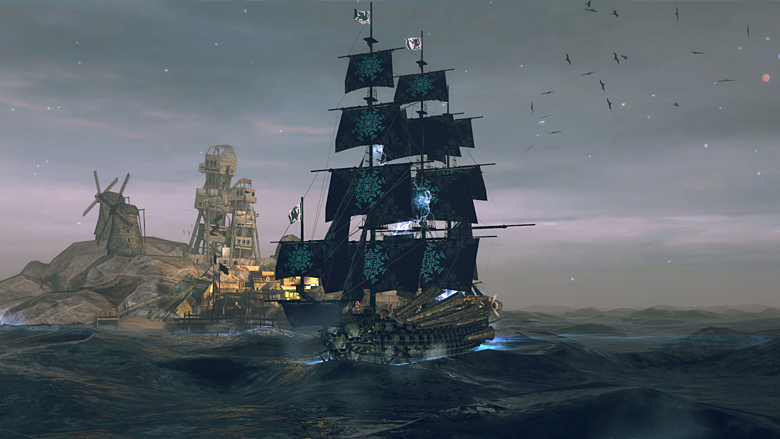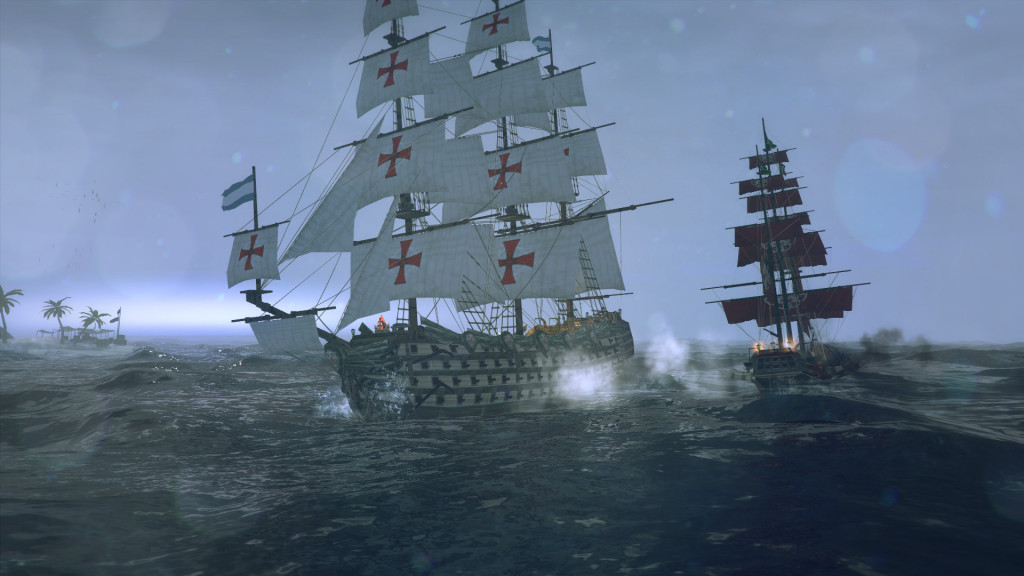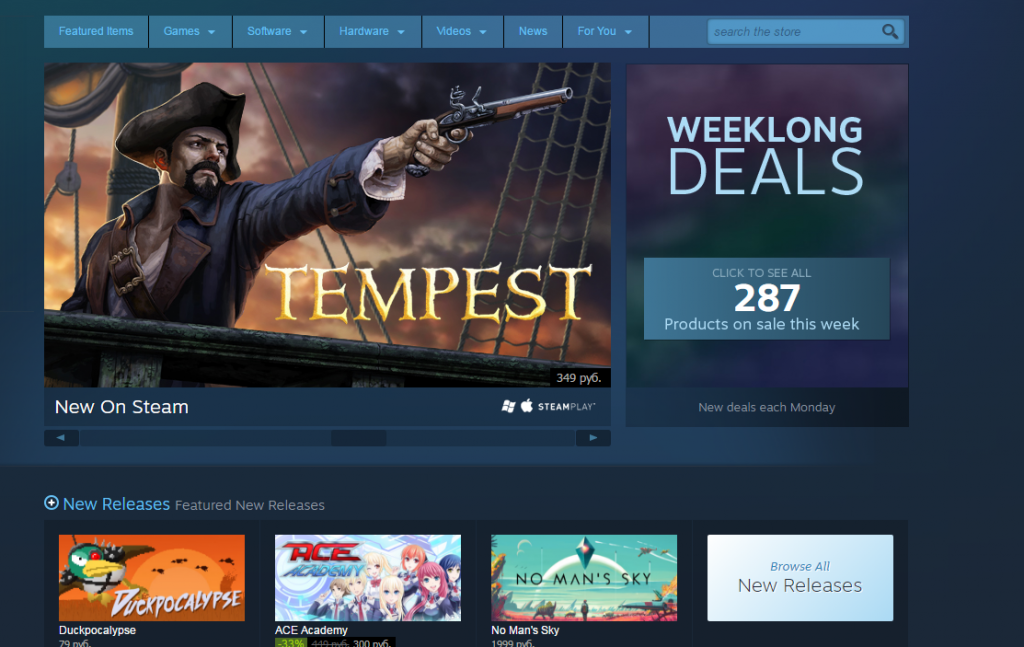Tempest development and promotion history
On November 29 , the project of Andrey Babak and the Kaliningrad company HeroCraft – Tempest – is released on GOG.com . About the history of the development and promotion of the game on Steam – in our material.

Tempest is a role–playing game about pirates. The gameplay is based on naval battles, ship improvement, team management and trading. The closest analogues of the game are Sid Meier’s Pirates and the Corsairs series.
From “runner” to “Corsairs”
The Tempest project started with a dream.
In early 2013, Andrei Babak, known in the gaming community as Aurelius, finished playing FootLOL and decided to start the next one.
He didn’t want to defrost old projects. At the same time, there was no inspiration for new ones.
For inspiration, he decided to turn to his old friend, who regularly had strange dreams.
– What did you dream about today, Vladimir? – he asked his friend.
– Beach and students.
“Where the beach is, there’s the sea,” thought Aurelius.
Many years ago, he wanted to make a game about the sea. Since Vladimir had a dream about the sea, then Aurelius decided that this was just the place to start.
From that dream to the release of Tempest on Steam, three and a half years have passed. But the first version of the game was made quickly.
“When you start with a clean slate, the work goes fast. The technical demo was created in two weeks. After a month or two, it already looked like something worthwhile. I presented the finished prototype to HeroCraft, they say, maybe we will work,” says Aurelius.
In the game at that time there was only the sea and a couple of ships that ran parallel to each other, and somehow it all resembled a runner. Despite this, the publishers liked the project.
“We watched the game – it was 2013 – and were very impressed with the level of graphics,” recalls the lead producer of HeroCraft Konstantin Inker. – “She looked very good for that time. We decided to urgently sign Aurelius for the project.”
The only question that remained was, what kind of game should it be?
Despite the maritime theme, to the idea of making a game in the spirit of “Pirates”/”Korsarov” did not come immediately. At that time, HeroCraft dreamed of a cooperative action for mobile devices.
“We looked at the boats that shoot beautifully at each other and decided that we shouldn’t limit ourselves to a runner, we need to make a big fritupley game,” Konstantin reveals.

Aurelius was surprised by the publisher’s plans. He was not ready to make a shareware game with online battles, because at that time he had no experience in developing such projects.
A compromise was found quickly. HeroCraft took over the game design, allocated its own fritupley specialist and two producers for the project. Work began to boil.
After a few months, she stopped: the game designer left. After 10 years in the industry, he decided that his vocation was to build houses, not make games. The producers with Aurelius had a huge design document in their hands, in which a lot of content was planned, but there was no game designer suitable for the experience.
A new concept was formed with the second game designer, with whom they started working remotely. Development began to move towards the “Corsairs”: singleplayer moments began to appear in the game.
Six months later, the game designer disappeared for a week. I stopped responding on Skype, social networks and email. “A week later he returned, repented, and we decided to give him another chance. Given. Everything was fine for a couple of months, and then he disappeared again. We didn’t wait for him this time and fired him,” Konstantin shares.
The game had not appeared by that time – the documentation and the basis, with ships floating and shooting at each other, were, but the product was missing. At this stage, HeroCraft decided to abandon the creation of a freeplay for mobile and focus on the concept of a single PC game.
Aurelius took over the design of the project.
The project, which was released two years later in early access on Steam, was created by Aurelius and several autosource artists.
The work went on without preliminary work on the design document. Detailed documentation stopped with the departure of the second game designer.
“I usually just move according to the plan. There is a vision, there is an inner flair, there is constant testing, I myself have played it for thousands of hours and I understand well where to move and where not,” explains Aurelius.
“If the development team consisted of twenty people, then no one would be able to work without a specific plan. But we are dealing with a man-orchestra, who does not have to report to anyone: he does an excellent job without any task trackers. I believe that the time for which the PC version was made, no one would have done it faster and better than him,” Konstantin concludes.

Promotion at the early access stage
All development costs were taken over by the publisher HeroCraft, and he wanted to understand whether Tempest would be interesting to players. This was the reason for launching the game in early access. At that time, the game was 80% functional and 25% content ready.
The fate of the project depended on how it would manifest itself in early access.
“We came out on December 4th. Previously, it was a good time to go on Steam, and Tempest got into the Christmas sale,” says Ivan Pomytkin, head of PC games publishing. – “Now the game can’t participate in any sales in the first 30 days after release. If you want to earn good money in a short time, you need to go out at the end of September. In this case, the game participates in 75% of seasonal sales on Steam (Halloween, Autumn, Christmas), and Q4 closes financially very pleasantly.”
The project was lucky not only with the release date.
“We have direct contact with Valve. This is one of our most successful achievements as PC developers: we can communicate directly with them, instead of spamming the general mailbox and technical forum. Before the launch, we notified them about our game and our plans. They replied to the letter, which means their interest. At the launch of early access, they slightly tweaked the features, so Tempest hung in the “popular new products” much longer,” Ivan shares.

The game gets guaranteed promotion on Steam, and more recently it has also been very targeted. But all this is done automatically, at best semi-automatically. If the game suddenly starts from the start to earn not enough from the point of view of the platform robots, it immediately reduces the visibility of the product on the main page.
“Getting something more serious is already much more difficult, but it’s worth it – for example, the Daily Deal sale, which lasts only two days, can bring money in as few months,” Ivan assures.
He also highlighted the main conditions for Valve’s promotion in descending order of importance. Some of them played a role in the Tempest feature:
- the game is already earning a lot;
- the game is very popular on Twitch;
- they write a lot about the game;
- there is a great demand for games of this genre / the niche is not saturated;
- having direct contact with Valve;
- they like the game.
There was almost no paid Tempest promotion at the early access stage. According to Ivan, this makes no sense: “Journalists and influencers (streamers and video bloggers) they try not to talk about such projects, so all the purchased traffic will, at best, go into adding to what they want.”
“In the West, this is considered a high–risk event – buying and covering games from early access. There is a whole subculture, brought up by Jim Sterling, who says that you don’t need to spend money on early access, you don’t need to make pre-orders, you don’t need to encourage developers to make money on imperfections. And many representatives of the gaming community and the media really do that,” Ivan develops the idea.
But this does not mean that the company did not work with them. She actively promoted the project both in the media and on YouTube, on social networks, on forums and on Steam itself on her own.
“The most valuable asset that can be obtained on early access is a loyal and large community of players,” says Ivan. – “It’s hard to be interesting if you’re on early access. But we seem to have succeeded. Before the release, we released dozens of updates, patches, news, fixes and developer diaries, built a large gaming community and improved relations with Valve, made friends with a bunch of YouTubers and Rock, Paper, Shotgun, RPG Watch, Hardcore Gamer, Pirates-Life, Pirates Ahoy! Coop-Land and many others. And also, we have learned a lot. That’s the point of early access – you can make mistakes, gain experience and not ruin the product in the process.”

Dynamics of sales in early access on Steam
During the week in early access, all development costs were recaptured, despite the reduced price tag – $11.99, which was raised to $14.99 by the release. Most of the money was made on sales and updates, especially the German and French localizations turned out to be profitable. For 9 months of early access, HeroCraft sold 21 thousand copies only on Steam. By the release, the game was added to the desired 40 thousand people, which gave about 4 thousand copies sold in the future, and after the release this figure did not decrease, but doubled.